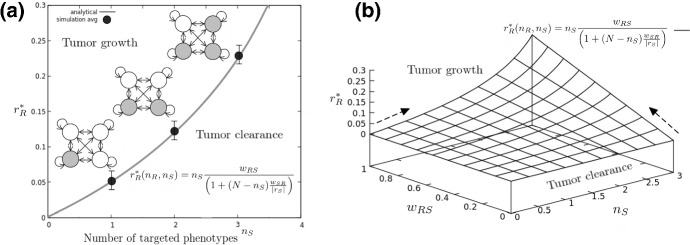Fig. 6.
PHS therapy in larger architectures (). In a, replicating phenotypes (empty circles) maintain drug-targeted phenotypes (gray) through stochastic switching. Therapies targeting replication through targeting of genetic drivers such as EGFR in GBM are likely to increase nonlinearly the cost for resistance phenotypes to maintain diversity (continuous line, equation displayed in the inset). Stochastic Gillespie simulations result in a certain degree of deviation, where extinction in smaller populations can eventually happen for values of . Filled dots indicate the value for which 95% of the computational experiments result in population extinction, with error bars indicating 5% deviations from this value (see SM for computational details). In b, the effect of combined transition therapies draining R phenotypes into S is captured by a therapeutic efficacy landscape. In it, the effect of adding a transition therapy () or a novel targeted agent () is captured by the gradients (dark arrows), directly resulting in an analytical scheme to compute best scenarios for combination therapy in PHS (Eqs. 27,28)

